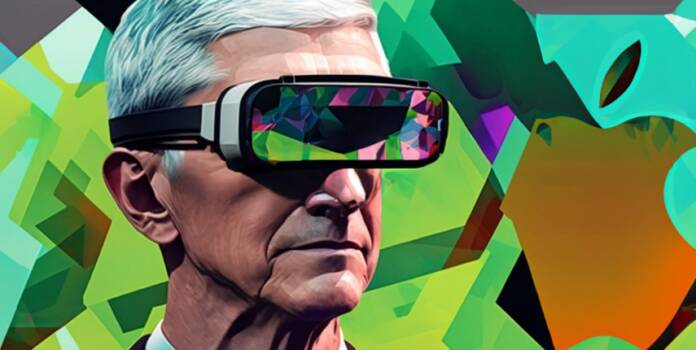Trying to convince the most wary users to understand and recognize its potential. This is what Apple will try to do with its mixed reality viewer for which it has been developing a wide range of applications specifically designed to take advantage of the new 3D interface who will have this device.
The story is always the same, in addition to the hardware you need the software, you need applications to make the most of it. This is precisely what Apple also wants for its viewer and to do so it will also rely on the many developers who will attend WWDC, the world conference dedicated to them which will be held from 5 to 9 June at Apple Park in Cupertino. Surely, under a very confidential embrago, a small number of third-party developers have already been collaborating with Apple for some time.
As stated by Mark GurmanBloomberg reporter, Apple would already have a series of apps ready collaboration (video calls, Freeform, messaging and more) and lots of games. But with its viewer you can also do fitness, via Fitness +, as well as use most of the features that we find on the iPad today.
The viewer will cost a lot, at least in its first version. There is talk of about 3000 dollars, a decidedly high price to be able to consider it a mass product. But for now it doesn’t have to be, a cheaper version will come in the future, when potential customers will be able to find many ready-made apps with which they can actually exploit it.
Apple’s initial goal is to try to make people understand why you might need a headset and how to best use it. Tim Cook will have to convince users that the viewer will represent a new way of producing and consuming content. The ultimate, long-term goal is to create a platform that could one day replace the iPhone. But the road will be very long to go.
According to Gurman, much of the work Apple has done so far and requested from developers has been to aadapt existing iPad apps to the new headsetThat blends virtual and augmented reality. Therefore, through the new interface, users will be able to immediately access many apps to which other specially developed ones will be added. The headset will be based on xrOS, a specially modified version of iOS, and will therefore be already compatible with all apps which will need to be modified only slightly.
Apple has already adapted and optimized its native apps including Safari web browser, Calendars, Contacts, Files, Home, Mail, Maps, Notes, Photos, Reminders, Music, News, Stocks and Weather as well as Pages, Numbers and Keynote, iMovie and GarageBand for video and music production.
Of course there will also be Messages, a specially crafted version of FaceTimewhich will allow the generation of 3D versions of the participants in virtual rooms, and of the Apple TV app to be able to see multimedia content and sporting events in virtual environments (halls, deserts, sky and more), another sector in which the Cupertino company is quietly entering having secured the rights to Major League Soccer and Major League Baseball
In addition to these main apps, Apple has also developed a version of Books for its viewer, which should allow you to read in virtual reality, and is testing a camera app to take pictures using the various integrated cameras. It shouldn’t be missing either an app to aid in meditation offering a sense of immersion with soothing graphics, sounds and voices.
Finally, Gurman also gave some information on what the interface of the viewer he will probably have should be like a sort of Digital Crown similar to that of Apple Watch or AirPods Max, which will allow you to move between virtual and augmented reality. In the first case, users will be fully immersed in the apps, in the second the real world will be “augmented” with various graphical contents.
Also, within the mixed reality interface, the headset should allow you to use multiple apps at the same time and, as other viewers already do, it should remind the user where apps have been opened: for example, if the browser is launched when in a room, if you leave and re-enter it will still be open.
For navigating within the interface hand and eye gestures should be used, in a very natural way. To select an object just a pinch, to scroll through the menus you need to move your fingers. To enter text, in addition to voice, there should be a virtual keyboard but you can also connect a hardware keyboard. The voice assistant Siri should not be missing and there should also be a Control Center to access the settings and a biometric system to unlock it, probably recognizing the iris.














